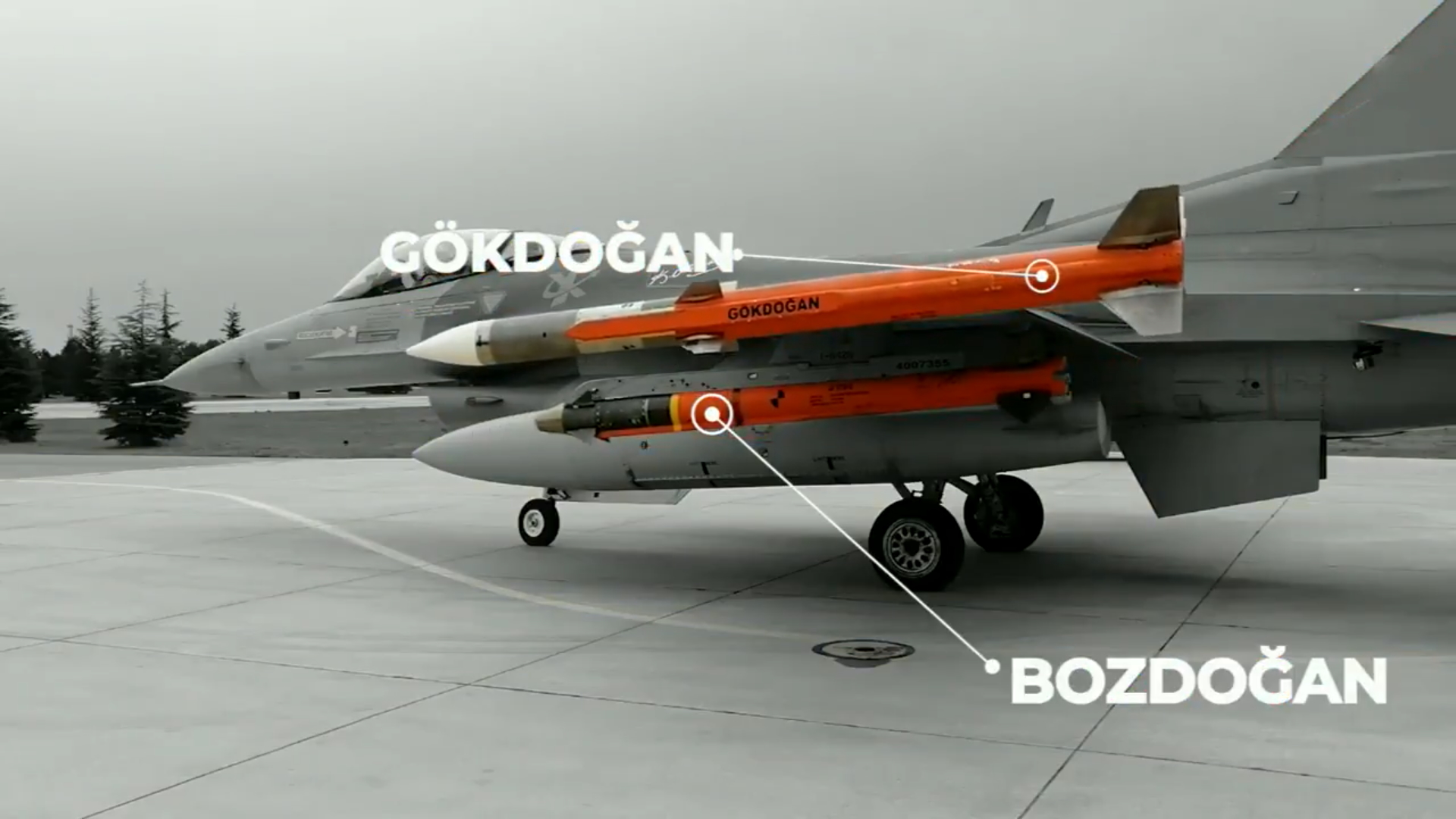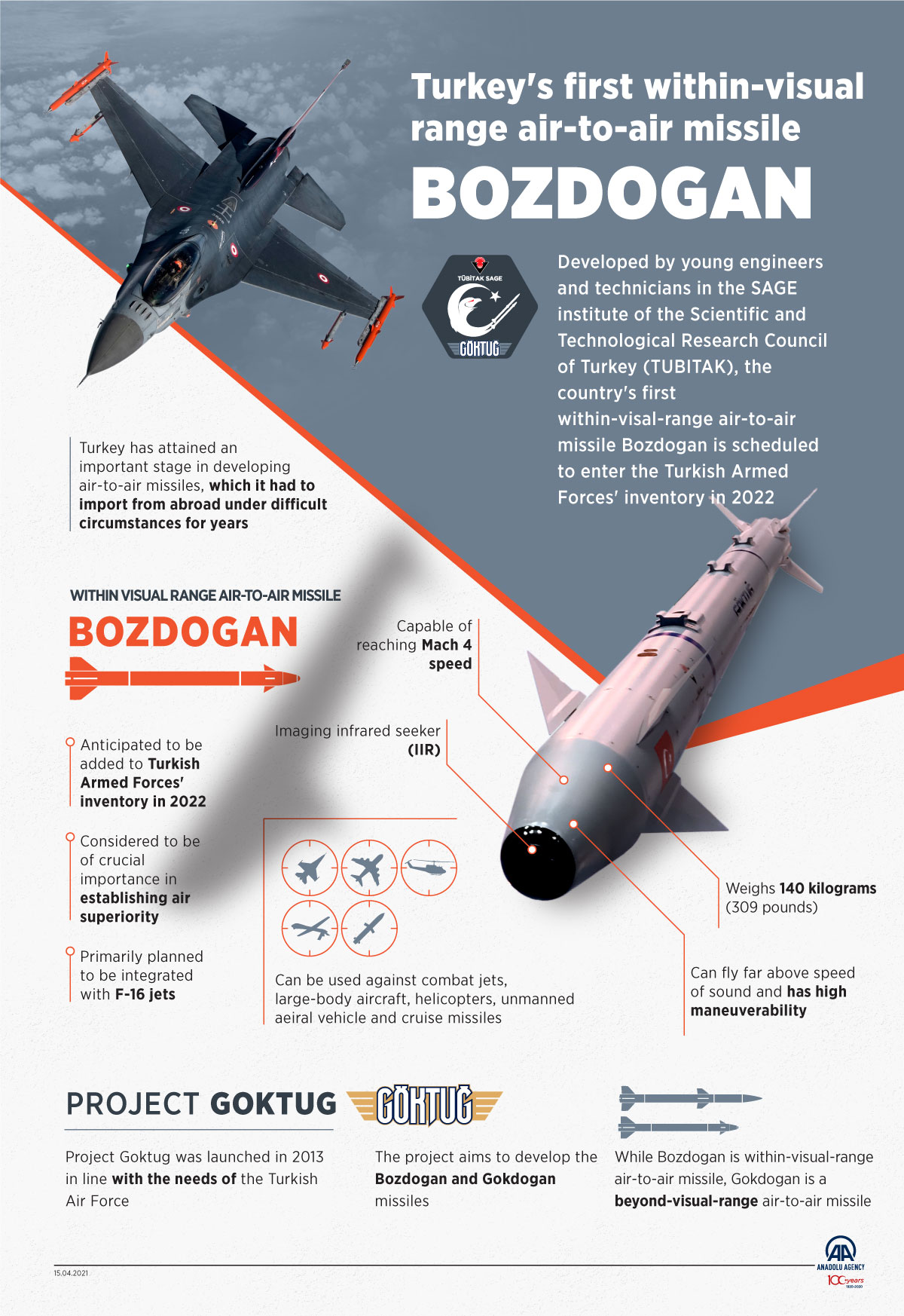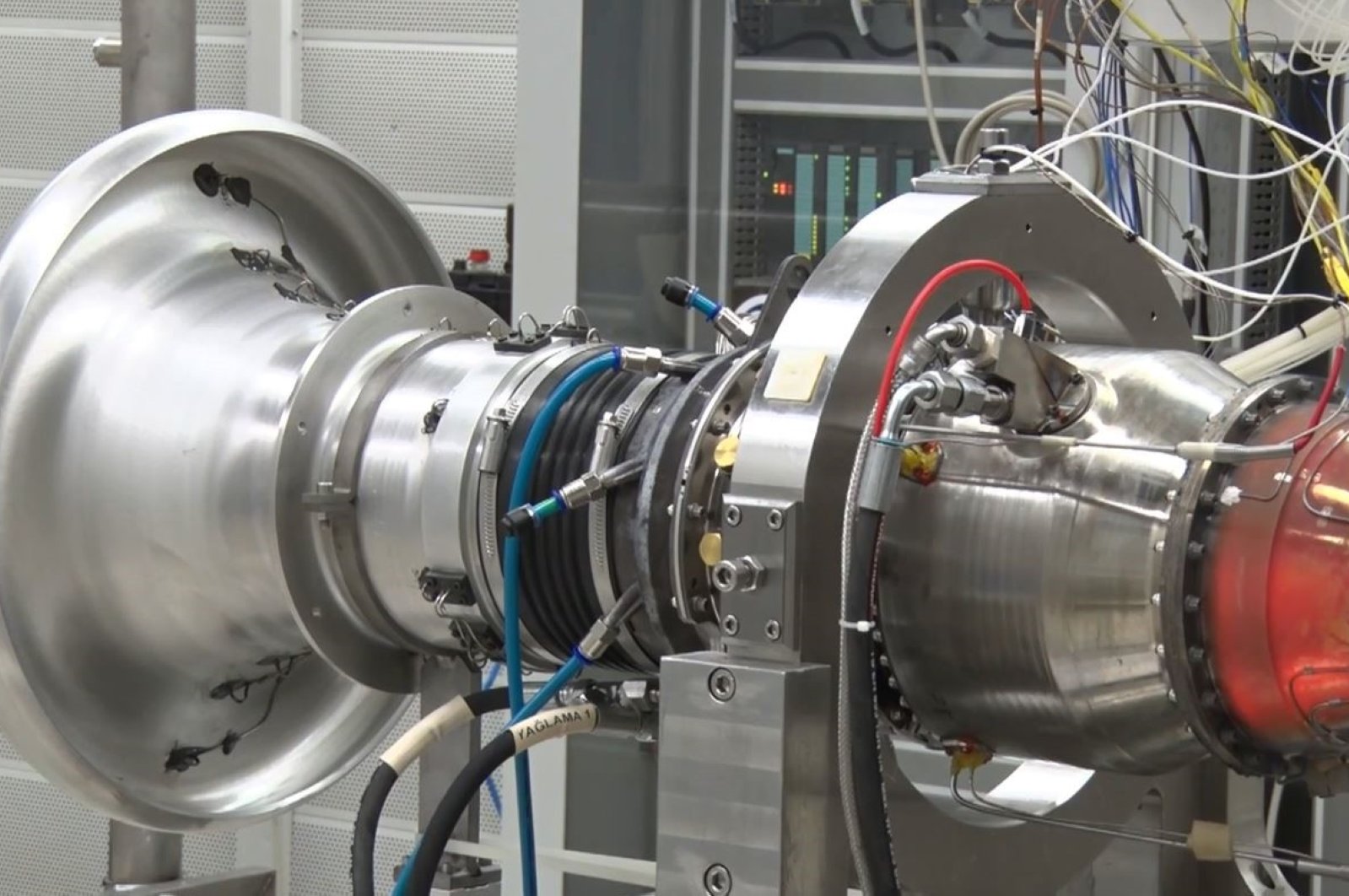President ERDOĞAN Announces Successful Test of BOZDOĞAN WVR Air-to-Air Missile
The first air launch test of the BOZDOĞAN was completed using an F-16C Block 40 fighter of Turkish Air Force (TurAF) 's 401st Test Squadron Command at the Sinop Missile Test Range located in the Black Sea province of Sinop in northern Turkey. The first air launch of the BOZDOĞAN missile was monitored live by the test measurement equipment at the Sinop Missile Test Range (such as radar systems and high-speed cameras that can measure the missile's trajectory and speed) and by accompanying F-16s (at least one of them was fitted with a SNIPER Targeting Pod). According to the video, the BOZDOĞAN missile was able to lock on its target before launch at an estimated distance of 15km and performed a direct hit to ŞİMŞEK Targeting Drone at 5-8 km. Prior to the live firing test, Turkey declared a NAVTEX on April 5, 2021, for shooting training to be performed at the Black Sea during April 10-18, 2021.
BOZDOĞAN, along with GÖKDOĞAN, another indigenous air-to-air missile with active RF seeker and beyond visual range engagement capability are being developed under the GÖKTUĞ Project run by the TÜBİTAK-SAGE (Defense Industries Research and Development Institute) since 2013. The GÖKDOĞAN and BOZDOĞAN missiles were unveiled during the 13th International Defense Industry Fair (IDEF '17) held in Istanbul in May 2017 and are expected to be ready for serial production in 2021 and 2022, respectively. the Serial Production Phase is expected to be carried out by Roketsan. The short-range air-to-air missile BOZDOĞAN (Merlin) will replace the AIM-9 series Sidewinder missiles in the future. The other missile, GÖKDOĞAN (Peregrine), beyond visual range air-to-air missile, is aimed to replace AIM-120B AMRAAM missiles.
Equipped with a high-resolution dual-color Imaging Infra-Red (IIR) seeker designed and developed by TÜBİTAK-SAGE, with a comprehensive off-boresight capability, along with advanced countermeasures, BOZDOĞAN is a WVR AAM with an effective range of 25km. According to TÜBİTAK SAGE, the BOZDOĞAN missile can travel at a speed of Mach 3. According to technical specs, the BOZDOĞAN has a length of 330cm, a weight of 140kg, and 160mm diameter. Equipped with Aselsan's solid-state, single-source Ku-Band active RF seeker with a mechanical gimbal GÖKDOĞAN BVR AAM, with advanced countermeasure capability and data link update, it has a range of 65km. Powered by solid fuel dual pulse rocket motor GÖKDOĞAN can travel at a speed of Mach 4. BOZDOĞAN is equipped with TVC capability for superior maneuverability and off-boresight launch capability. BOZDOĞAN currently does not feature data link capability, but it is believed that this capability would be gained in the serial production phase. The data link capability, which also adds LOAL (Lock-on After Launch) capability to the missile, will increase BOZDOĞAN's engagement zone that significantly improves the maximum engagement range. Both missiles are powered by smokeless solid propellant rocket motors and will have a High Explosive (HE) warhead with a blast/fragmentation effect and a laser proximity fuse.
Interestingly, the air-launch of the BOZDOĞAN missile was performed from an F-16C Block 40 aircraft, which did not receive avionic upgrades under PO-III and F-16 MSM Projects. The non-modernized F-16C/D Block 30 and Block 40 aircraft are equipped with the older generation mission computer, and source codes of the Operational Flight Program (OFP) that runs on this mission computer were purchased by Turkey many years ago. So it is believed that this version has purposely been preferred, thanks to having source code of mission computer indigenously developed BOZDOĞAN WVR missile can be fully integrated into the aircraft and can be used within its whole flight and engagement envelope. This full integration capability will be beneficial, especially in the GÖKDOĞAN BVR missile. The AIM-120 AMRAAM missile, which GÖKDOĞAN will replace, needs inputs from the AN/APG-68 Fire Control Radar (FCR) during the engagement sequence. According to open sources, the mission computer onboard the launching aircraft programs the missile's autopilot to bring it within a homing basket as it approaches the target. The autopilot can be updated in-flight using a data link info transmitted by the APG-68 radar/antenna. And once within range of the target, the missile activates its active radar seeker. However, when the AIM-120 is launched in the "SLAVE" mode, the missile receives updated target information from the launch aircraft's FCR, which is tracking the target. So in BVR engagement, the AIM-120 receives data directly from the APG-68 FCR. If the missile is launched in the "BORE" mode, the data link is not required because the missile is flying at what it was "pointed" at prior to launch. So for the full integration of GÖKDOĞAN BVR AAMs on F-16, the control capability of the mission computer and OFP will play an important role. Otherwise, the GÖKDOĞAN missile will be operated with limited capability.
Following their introduction at the IDEF '17, both missiles underwent ballistic launches from the ground in 2018. The indigenously developed GÖKDOĞAN (Peregrine) and BOZDOĞAN (Merlin) Air-to-Air Missiles (AAMs) were flight tested from a ground launcher. Ballistic Flight Tests of indigenously developed missiles were successfully carried out at Sinop Missile Test Range during March 24-25, 2018. The Ballistic Test Missile (BTM, without seeker and with self-destruction capability in case of emergency) versions of short- and medium-range GÖKDOĞAN and the long-range BOZDOĞAN were fired at their virtual targets over the Black Sea. These tests were carried out to measure the missiles' solid-fueled rocket motors' performance and were successfully completed.
During the ground test campaign that concluded in late 2019, TÜBİTAK-SAGE also carried out firing tests at moving air targets (Banshee Target Drones flying at around 4km altitude) from stationary ground launchers to test the missiles' command and control, navigation, and flight trajectory capabilities and conducted a series of flight tests with BOZDOĞAN in 2019 within the scope of Flutter Flight test Program. In November and December 2019, Turkey's indigenous BOZDOĞAN Within Visual Range (WVR) and GÖKDOĞAN Beyond Visual Range (BVR) Air-to-Air Missiles were successfully tested against target drones (Banshee). During these guided firing tests, BOZDOĞAN and GÖKDOĞAN missiles that fired from the ground launchpad (imitating F-16 wing) successfully intercepted the target drones (without performing direct hit since the tests were planned as non-explosive shooting test). In 2020 several test flights on 401st Test Squadron Command's F-16s were performed. On November 9, 2020, Minister of Industry and Technology Mustafa VARANK announced that an air-launch test campaign with GÖKTUĞ missiles (BOZDOĞAN and GÖKDOĞAN) would be started at the end of November. And finally, within the scope of the GÖKTUĞ Program, the first-ever air-launch test of the BOZDOĞAN IIR guided WVR missile took place between April 10-13 at Sinop Missile Test Range. Further air-launch tests will be performed with the BOZDOĞAN missile in 2021 for qualification purposes. The missile will enter the serial production phase after the completion of the flight test program in 2021 and the Low-Rate Initial Production (LRIP) is expected to start from 2022 onwards.
TurAF is planning to equip the BOZDOĞAN missile initially on its F-16C/D fighter jets. But the missile is also expected to be integrated on TUSAŞ's Advanced Jet Trainer & Light Attack Aircraft HÜRJET and 5th Generation fighter jet TF-X/MMU.
On April 14, 2021, President Recep Tayyip ERDOĞAN announced that the BOZDOĞAN IIR guided within visual range (WVR) air-to-air missile developed by youth Turkish technicians and engineers under GÖKTUĞ Project has successfully destroyed its target (TUSAŞ`s ŞİMŞEK high-Speed target Drone) during...

www.defenceturkey.com











